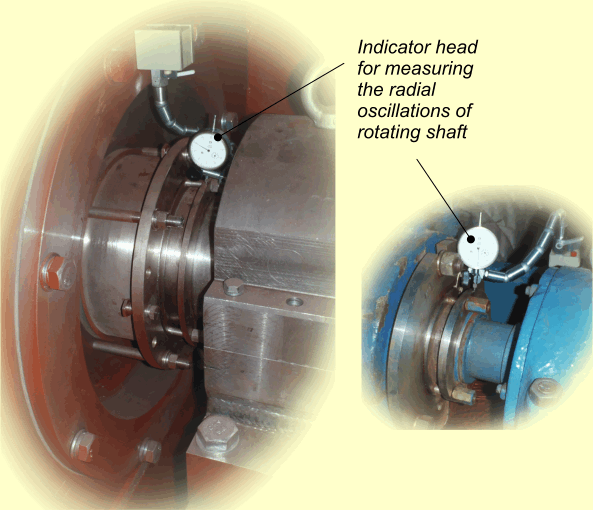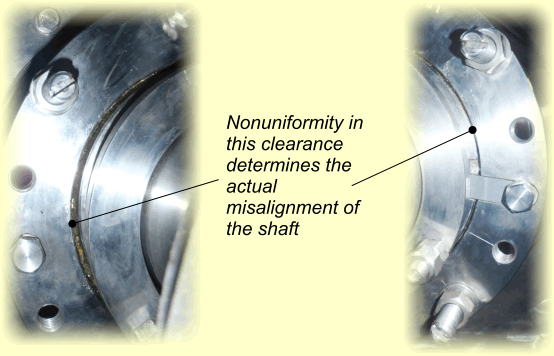
devices necessary
Packing gland seal is one of the most common ways for sealing shafts, rods, plungers, etc. in various industrial equipment such as pumps, mixers, blenders, agitators.
Its main advantages over other methods of sealing are that to reduce a leakage it is enough to tighten the stuff by a gland and when the packing becomes wore it can be replaced without disassembling the equipment.
However, the practical use of the gland seals is associated with the following tasks:
● the operation life of the packing must be as long as possible;
● the gland seal must be reliable without unpredictable operation failures;
● the necessity to tighten the packing must occur really seldom;
● to minimize leakage and reduce a heating at high speeds of sealed joints and (or) under high pressure of working liquid;
● to completely eliminate leakage in case of relatively low speeds, that is important not only economically but also from an environmental point of view (contaminants, corrosive and radioactive liquids);
● decrease a wear of the sealed surface beneath the packing, including situations for abrasive working medium.
By simple selecting of proper sort of stuffing to solve these tasks is often not possible. When you need to choose a packing, you have to take into account not only its chemical and thermal resistance, coefficients of friction , thermal expansion, thermal conductivity, etc., but also its "elastic-plastic" properties. So-called "soft" types of packings are more leakless and they better seal, but the operation causes their quickly wear and the need to frequent replace them, so they have a short lifespan. On the other hand, the "hard" types of packings having improved durability, serve longer, but their operation is accompanied with increased leakage and causes accelerated wear of the sealed surface of the shaft ( rod, plunger).
Widely spread suggestion to install in stuffing box the different stiffness packing rings in a certain order only partially solves the tasks, since disadvantages of each type of rings using in a set do not completely disappear: the "soft" part of the package quickly wears out and becomes squeezed, and the "rigid" rings cause the wear of under-packing sealed surface.
Another approach has to do with modernization of the gland sealing unit 1) by applying "superhard" hardening of sealed surface; 2) by installing an additional standby stuffing chamber for the case of failure of the primary seal; 3) stuffing box is designed to be demountable with the purpose to accelerate the replacement of packings, etc.
This kind of improvement is a struggle with effects, not with causes. It is known that the main reasons for reducing the lifespan of gland seal are 1) a misalignment of shaft (rod, plunger) with respect to the stuffing chamber and 2) radial vibrations of the shaft while the equipment operates. Even slight misalignment and vibration of the shaft increase the contact pressure the packing on sealed surface. This leads to an increase the leakage and causes a collapse and accelerated wear both of the packing and shaft surface. In case of the large radial displacements or oscillations of the shaft the packing rings can even be revolved or squeezed out through the gap under the gland or inside the equipment.
If we imagine the equipment which has the "ideal" concentricity and keeps that property during operation, then above tasts to seal for such equipment are either not occur or are solved without much difficulty. And the closer the equipment to such an ideal, the more reliable and leakproof the gland seal operates.
To strive for the ideal in designing and producing an equipment is necessary, but not always this can be achieved. Here are examples of mixers and centrifugal pumps with a long shaft, which inevitably sags under the weight and experiences the radial vibrations because of shock loads on the impeller blades caused by stiring or pumping fluid. Radial oscillations are especially typical for fluids with high viscosity and for slurry. Another typical example is the radial misalighment and swinging of the polished rod for oil pumping equipment.
The question arises - what to do in such situations? You can buy a mountain of stuffing and continue to run the equipment, stopping it every month for replacing the packing. But the best solution is to install the sealing device that automatically compensates any misalignment and vibration.
Here we introduce a sealing device with a self-centering ("floating") stuffing box. In this seal even when the value of non-concentricity of the shaft (rod, plunger) reaches 3.5 mm on the radius, the stuffing box has the ability to self-align and to track radial vibrations of the shaft during the equipment operation. The packing is working under minimal contact pressures caused the movement of shaft, and therefore the need to reload the stuffing box occurs very rarely. As a result the packing serves significantly longer than in the common gland seal. In this case a wear of sealed surface is virtually absent.
radial oscillations of the shaft

It is interesting that after the installation the sealing device by evaluating the gap between moveable stuffing box and fixed seal housing you can accurately measure the actual value of misalignment of the shaft (rod, plunger).
Based on these measurements the accurate centering of the shaft can be performed to ensure long and reliable operation.
If you put an indicator head on the gland of moveable stuffing box you can also estimate the amplitude of radial vibrations of the shaft while the equipment operates.
At relatively low speed of rotation of the shaft the vibration amplitude can be measured by setting the indicator head directly on the shaft.
Watch the video on YouTube about measurements of the shaft radial vibrations of mixer:

for self-aligning sealing devices arises
A numerous performed measurings of misalignment and radial vibrations for different industrial equipments reveal the typical situations where there is a necessity for self-centering stuffing sealing devices:
☀ Rotor impeller has a certain imbalance that occurs over time as a result of equipment operating.
☀ Shock loads on impeller blades caused the stirring or pumping fluid, that are typical, for example, in the case of working medium with high viscosity and at high revolution rates.
☀ Non-concentricity of the shaft (or rod, plunger) relative to the inner surface of the stuffing chamber, which can exist either initially or occur because of the wear of the inner surface of the stuffing chamber and (or) bearing housings or guide bearings.
☀ Horizontal shaft has relatively long length. Deflection appears due to the gravity forces, centrifugal forces or as a result of the operation.
☀ Radial oscillations of the shaft or rod for vertical centrifugal or plunger pumps, as well as for mixers. The gradual deterioration of the guide bearings leads over time to an increase in the amplitude of oscilations.
☀ Radial oscillations of shaft for cradle-mounted pumps, in particular, if they are pumping the slurry.
☀ Hydrodynamic effects: a vacuum in the suction pipe or vice-versa - an extremely high pressure, strong variation of pressure in emergency situations.
☀ Operation in the mode of alternation of frequent starts and stops.
☀ Oscillation influence on the rotor from the side of the motor.
☀ Abrasive, polluting, corrosive, radioactive medium, when leaks are not allowed at all.
☀ Equipment that has to operate continuously for long period and any its stoppages are not permitted.







